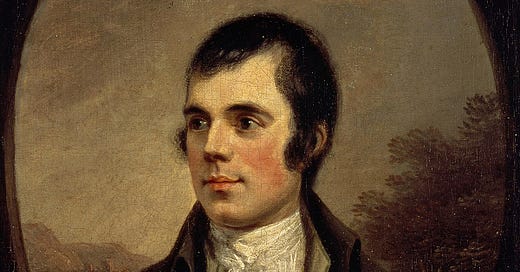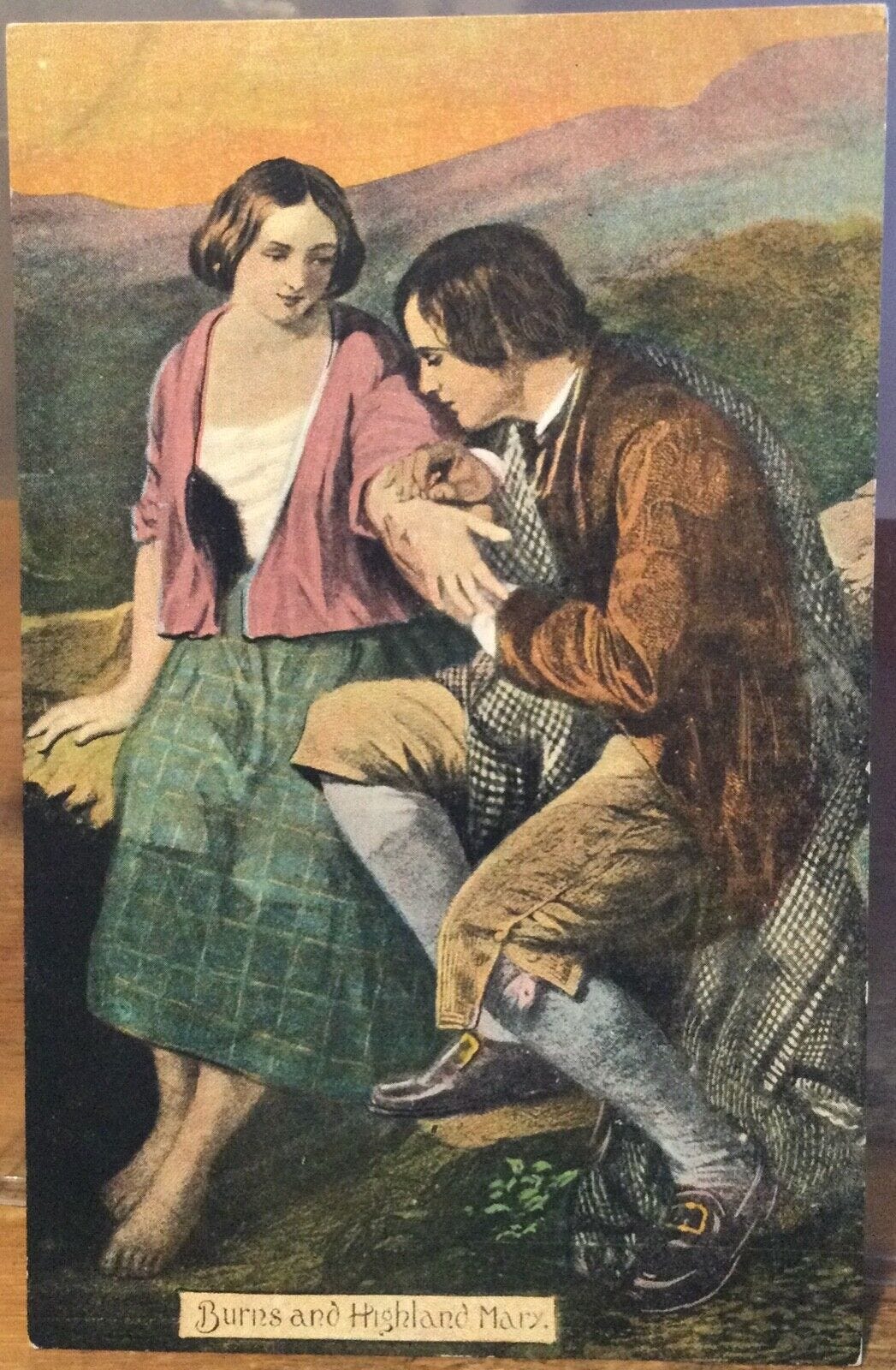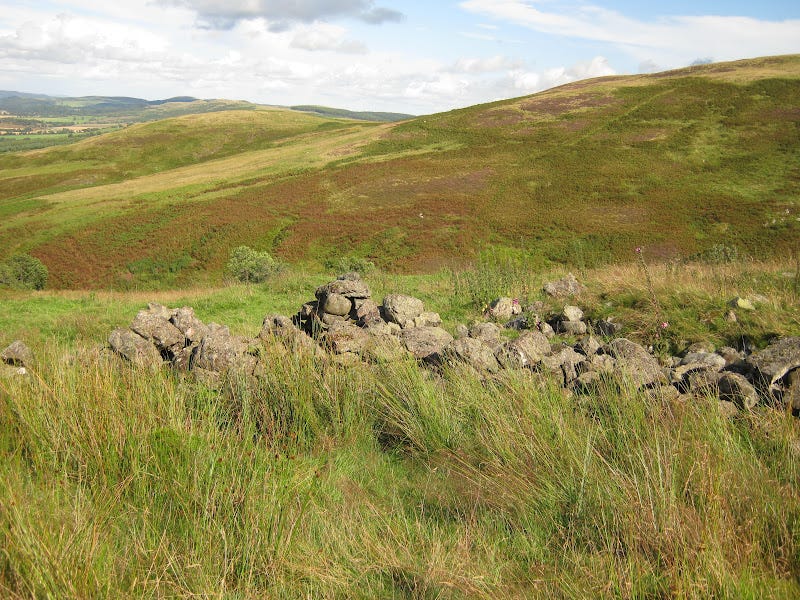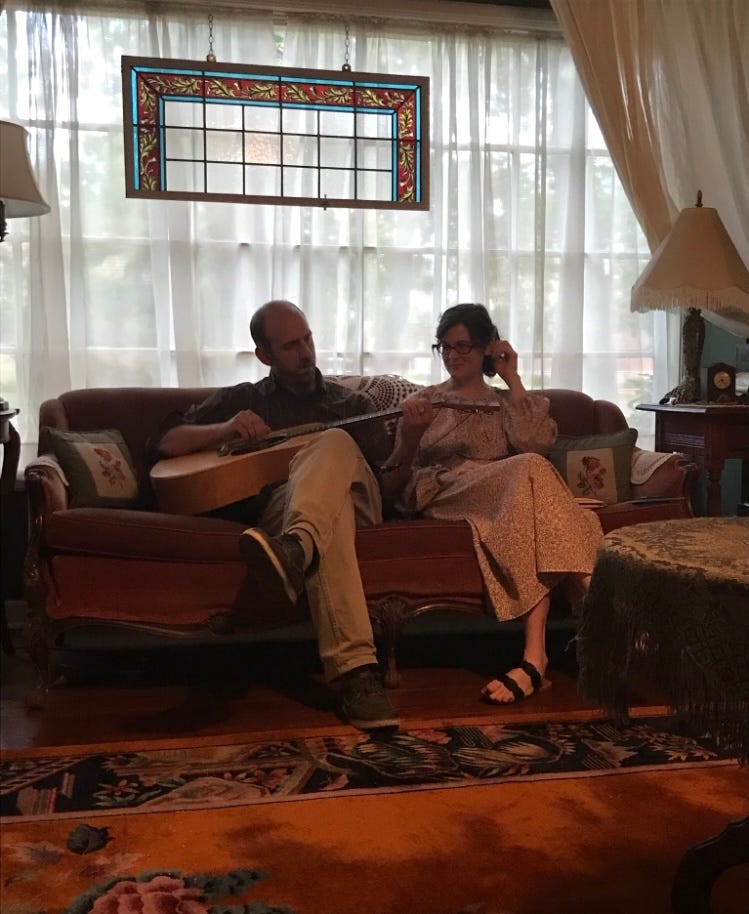“Those who think that composing a Scottish song is a trifling business, let them try.” — Robert Burns
Robert Burns is perhaps the most famous Scottish person ever born. To this day, may people sing his song ‘Auld Lang Syne’ to ring in the New Year.
Born in a small cottage in Alloway, on the west coast of Scotland, he grew up the son of a poor tenant farmer and his health suffered from the harsh conditions of his early life.
He farmed for most of his life, not always successfully, and he was on the point of moving to Jamaica when his poems became popular enough that he could stay in Scotland and be a poet.
But he still had to work, and became an excise man, a tax-collector. He had to travel a lot with this job, and he traveled on horseback in all weathers. This too led to his ill health, and he died on July 21st, 1796. His last son, Maxwell, was born on the day of his funeral.
Burns was a notorious ladies man, and had several important relationships, including his brief romance with Mary Campbell ‘Highland Mary’ as she’s known. She died from typhus, which she caught from her brother, in 1786. She has been immortalized in many paintings, showing her in a handfasting ritual (an old Scottish custom of pledging yourself to another) with Burns.
There was also his wife, Jean Armour, whom he met sometime around 1784. In 1786, she became pregnant, bearing twins in 1786. Jean’s father disapproved of her relationship with Burns, and through this, they were not officially married until August 5th 1788. They had nine children together, and Jean also helped raise at least some of Burns’ illegitimate children (of which there were at least four).
Burns wrote a copious amount of poetry, but he is best remembered for his songs. He used many existing folk tunes for the songs he wrote, as well as collecting existant folk songs. My favorite of these is ‘The Lea Rig’ which I will quote below:
When o’er the hills the eastern star tells bughtin’-time is near, my jo;
And owsen frae the furrowed field return sae dowf and weary O
Down by the burns where scented birks wi’ dew are hanging clear, my jo
I’ll meet thee on the lea-rig, my ain kind dearie O.
At midnight hour, in mirkest glen, I’d rove and ne’er be eerie O,
If through that glen I gaed to thee, my ain kind dearie O.
Although the night were ne’er sae wild and I was ne’er say weary O,
I’d meet thee on the lea-rig, my ain kind dearie O.
The hunter lo’es the morning sun to rouse the mountain deer, my jo
At noon the fisher seeks the glen along the burn to steer, my jo
Gie me the hour o’ gloaming’ gray, it makes my heart sae cheery O,
To meet thee on the lea-rig, my ain kind dearie O.
Bughtin-time is sheep-folding time, where sheep would be moved around to different crops and part of the land where there was food for them to eat. The lea-rig was a piece of land left unploughed in a cultivated field.
When I was in my twenties, I ended up getting two ukuleles ( a soprano and a baritone). I’ve never learned to play either very well, but I did learn ‘The Lea Rig’ on my baritone ukulele, and at some point in 2018 I played it for Nick — I suppose one of the times we would get together for singing, when my sister Heather was in town. This is before we began dating again. Yet I feel that the song bound us together at the time, and since then. The beauty of the words and melody spoke to us both. Nick has learned it on the guitar (he plays much better than I ever did on my ukuleles!) and we sing it together and I love doing this with him.
There is a power and strength to many of Burns’ songs, not all of which are love songs. ‘A Man’s a Man for a’ that’ is a wonderful song on the equality of all men. What he said is true — it is no trifling business to write a Scottish song. He was a master at it in such a way that still touches peoples lives, especially my own.








How precious are you and Nick?! Fern was just gifted a (toy) ukulele. Maybe you can give her a lesson!
This is beautiful, thanks Mairi:)